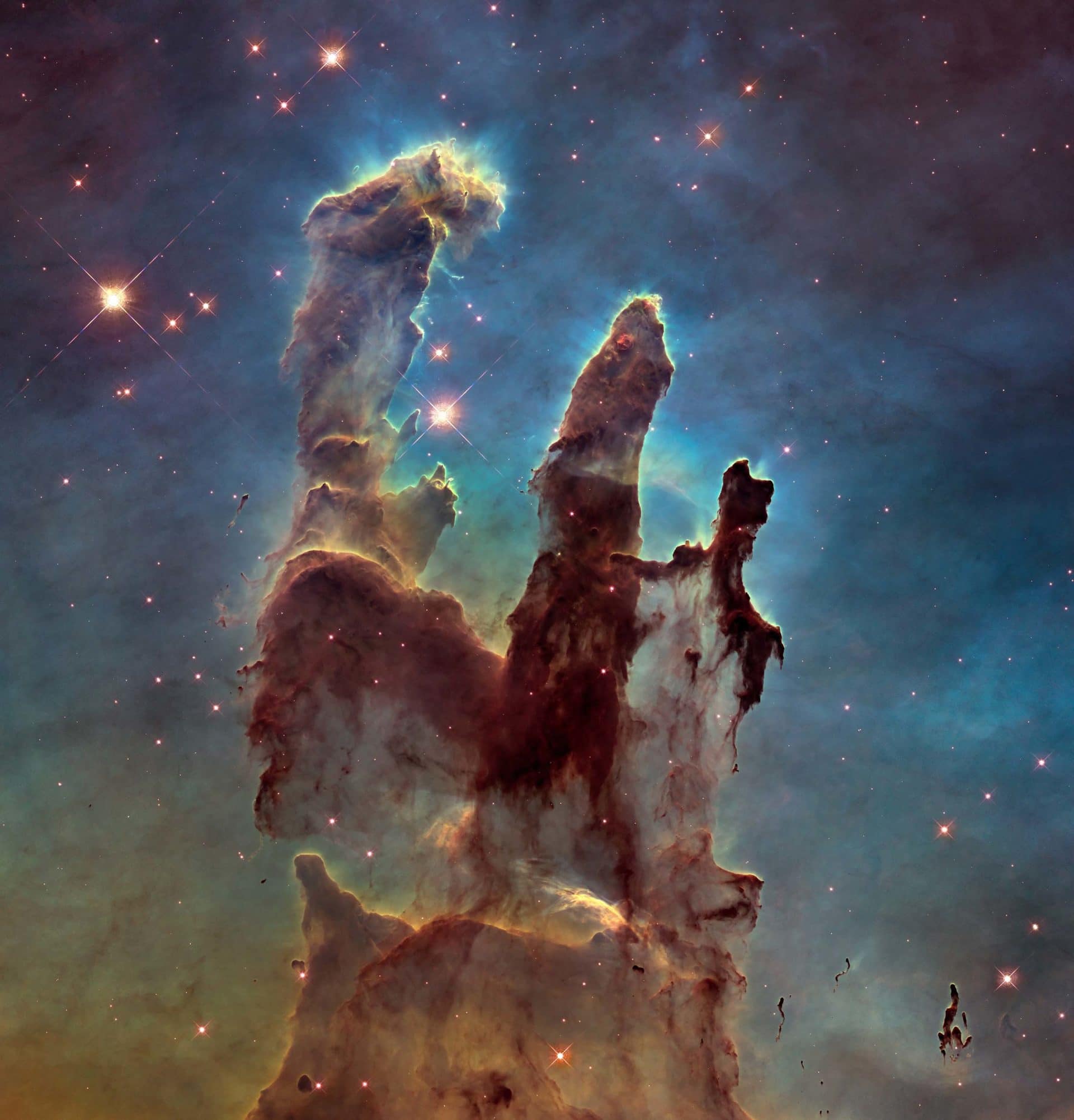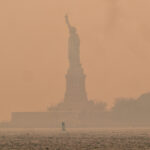Sketching the Stars: How Art Can Advance Astronomy
In January 2004, NASA announced it was canceling a mission to service the Hubble Space Telescope. In light of dangers associated with the Columbia tragedy the previous year, it was considered too risky. As a result, the Hubble, lauded as one of the most influential scientific instruments of all time, would have only a few remaining years to survive.
Over the following months, the plan was intensely debated. Petitions garnered thousands of signatures from members of the public. Congressional committee meetings and hearings were held. Citizens and scientists alike, inspired by the discoveries and images the telescope had produced, clearly weren’t ready for the telescope’s premature retirement.
By that point, the Hubble had nearly fulfilled all its mission objectives since its launch in 1990. With 100,000 observations, it had measured the universe’s expansion, studied planetary origins, and produced a vast trove of pictures like the iconic Deep Field (seen at the top of this piece) and Pillars of Creation, which changed the way we see our place in the universe. These images, taken for science and re-mastered by astronomers, captured the public’s imagination in a way no telescope had before.
Eventually, the servicing mission was reinstated and today the telescope continues to be a powerhouse for discoveries and inspiration. In a sense, the Hubble was saved by art.
Science and art are often thought of as incompatible. In most universities, they’re housed in separate buildings. In bookstores, they’re shelved in different aisles. But astronomy and art have been inseparable for centuries.
In 1610, Galileo published his seminal work, “Sidereus Nuncius”— often translated as “Starry Messenger” — which contained numerous drawings he sketched over long nights in front of his telescope. They included the cragged terrain of the moon, stars invisible to the naked eye, and what would come to be known as the Galilean moons circling Jupiter.
Galileo drew on art techniques like perspective and chiaroscuro — a manner of depicting light and shadows that was relatively new at the time — to show the lofty mountains and craters on the moon’s imperfect surface. Using geometry and his drawings as a measuring stick, he was even able to measure their heights with astonishing precision. Two years later, Lodovico Cardi, also known as Cigoli, a prominent Florentine painter, immortalized Galileo’s sketches of the moon in a fresco that still stands in the Santa Maria Maggiore, a Basilica in Rome.
In the era before digital CCD cameras and their predecessors, photographic plates, astronomers were required to be artists. Today, whenever an image is taken of the cosmos, it’s initially a monochromatic freeze-frame, and it takes careful layering and palette selection to bring images like the Pillars of Creation to life.
Jayanne English, a professor at the University of Manitoba, has spent her career refining art techniques for astronomical data. As a former coordinator at the Hubble Heritage Project, formed in 1998 by a group of astronomers, she worked with a team to create and curate the images that helped save the Hubble. “Public outreach had a great impact there, and a big component of that were the images that proved how great the telescope was,” English said.

“The images had the impact of justifying the expenditure,” she went on.
What’s more, “There’s been this absorption into popular culture, right down to fabrics,” English said of images from the project, which have even shown up printed on dresses.
In addition to the work being done with Hubble, NASA provides a direct platform for the public to animate the cosmos through art. In 2011, NASA launched Juno, a spacecraft tasked with studying Jupiter’s formation and evolution. Along with a fleet of scientific instruments, an extra program called JunoCam was included. Since its arrival at Jupiter in 2016, the JunoCam camera has taken pictures of the Jovian giant every 53 days. The targets of these images are selected by the public through online voting, and the raw data and pictures are processed by amateurs after being posted online by the JunoCam team.
“We wanted to give the public a chance to participate — not just be passive, but actively participate in operating flight instruments on a spacecraft,” says Candice Hansen, a co-investigator for the Juno mission in charge of the development and operation of JunoCam. “We offer the public three entry points depending on their capabilities. We have experts that want to start with raw data, and others who want to grab the color images and play with them in Photoshop, and it’s all good.”
In the process, the program has given scientists a fresh perspective on the findings. “When we have these dynamic, exaggerated color images, it makes us look more closely at what’s in them,” Hansen says.
“Even as a scientist, I’m so excited about this whole new vision of Jupiter,” she added
In fact, amateur renderings of JunoCam images have been reproduced in scientific papers. Recently, some JunoCam pictures prompted scientific interest when they revealed unusual cyclones at the planet’s poles to be unexpectedly stable and closely clustered.
In 2014, Benedikt Diemer, a cosmologist at the Harvard-Smithsonian Center for Astrophysics, launched a collaborative art project called “The Fabric of the Universe” with Isaac Facio, then a student at the School of the Art Institute of Chicago, that weaves astronomical data into art.
Using computer simulations of the structure of the universe, Diemer and Facio build solid models using three-dimensional printing that show how filaments of gas and dark matter connect massive clusters of galaxies — what astronomers call the cosmic web. The models show wall-like features that can’t be seen in two dimensions.
“For most analyses it’s fine to think in 2D, but here is a whole field in astrophysics that is concerned with understanding the cosmic web in 3D,” Diemer said.
With the aid of a specialized loom, they have also created woven installations nearly the size of a van that visualize the interconnectivity of the cosmic web. “We believe that art, as much as science, seeks to say something true about the nature of existence,” they wrote in a 2017 paper on their collaboration, “and that end is best served by artistic representation that grapples with real data and not only with allegorical concepts.”
Their art has been showcased at the Non-Fiction Gallery in Savannah, Georgia, and the Adler Planetarium in Chicago. While the project is largely intended for public outreach, it has also subtly influenced Diemer’s own research, even if he is hesitant to pinpoint exactly how. “I think certainly all these things influence the direction of my work,” Diemer said.
As datasets in astronomy become ever larger and combine measurements from many types of telescopes, new techniques are necessary to grapple with the immensity of information. Drawing on principles from art to create scientific visualizations, astronomers are able to see their work with a new perspective and, perhaps more crucially, share their discoveries with other scientists more clearly than with traditional techniques.
“Applying the techniques from art definitely influences the way astronomers see and interact with their data,” English said. “I don’t think [techniques from art] in astronomy visualization can be relegated to a sidebar any longer. It really does enhance discovery science.”
Mara Johnson-Groh is a science writer and photographer based on the West Coast whose work has appeared in Scientific American, NASA, Astronomy, Outside, Hakai, and other publications.











Comments are automatically closed one year after article publication. Archived comments are below.
So glad to know that the Hubble Space telescope will live on, ( I did not realize how perilous its future had become). It was its capture of the Carina Nebula that inspired my painting of ‘Phi’, a print of which now is housed in the Vatican Observatory Museum. You can read more about it at http://www.jillnichols.com. Science and art are most definitely connected. The exploration of nature is intrinsic in art as it is in science, as is our desire to connect with and understand beauty.
The items discussed in this article are so exciting! Nearly three decades ago when I was director of Hanson Planetarium in Salt Lake City, a group of us attempted to lead our planetarium into becoming an interactive science center type of facility with a science-art focus. With my departure the planetarium took a different route, but the science-art effort continued to become The Leonardo, located in the old public library building in Salt Lake City. So now, in this article, we see how illuminating the connection of science and art can be toward human comprehension of the cosmos. Readers are invited to check out The Leonardo to see how well it is achieving its intended mission.